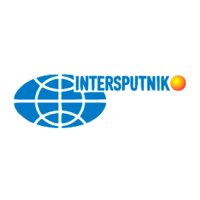These interviews are done by the Chairwoman of the Operations Committee Ms. Ksenia Drozdova, who talks to very interesting people representing companies and agencies from space, telecom and IT sectors all across the globe. This time an interview below brings us to the northern part of Asia, to Mongolia. The “Voice of Satellite Industry” presents an interview with Ms. Bolor-Erdene*, a Chairwoman of the Communication and Information Technology Authority of Mongolia.
Mrs DROZDOVA: First of all, could you please tell us about the history of space technology in Mongolia briefly?
Ms BOLOR-ERDENE: In 1965, Mongolia joined the Intercosmos program to study space for peaceful purposes, which marks the beginning of space exploration. At that time, the Soviet Union made a significant contribution to the development of space technology in our country. In 1970, the first Satellite Ground Station named the Orbit was established.
As a result, one of the Mongolian space missions was to send a Mongolian cosmonaut into space. The mission was successfully achieved in 1981 with the Mongolian-Soviet joint space flight under the Intercosmos program.
Since 1990, briefly, we have been focusing on the development of the application of satellite technology and preparing human resources.
Mrs DROZDOVA: As we know the digital transformation has been bringing huge impacts on each country and each sector of society. What do you think of the benefits of digital transformation in the space industry? Could you please share us with the perspective of digital transformation in Mongolia?
Ms BOLOR-ERDENE: Thedigital transformation in the space industry could bring the following benefits, including 1. Digital technologies and a new entrepreneurial spirit are shaping a new space economy; 2. Digital transformations have lowered the barrier of entry; 3. The emergence of private companies are seeking commercial opportunities in space exploration and exploitation; 4. Emerging space nations like Mongolia benefit from space technologies and applications in supporting sustainable development and economic growth; 5. The Public-Private Partnership (PPP) has become a reality in the space field.
In terms of digital transformation in Mongolia, the government of Mongolia has set the goal of becoming a Digital Nation over the next five years. The goal includes six strategic goals: improving access to digital infrastructure, developing e-governance, ensuring cybersecurity at all levels, improving public digital literacy, supporting technology-based innovation, and accelerating the development of other industries through information technology.
I would say that the first step in our journey towards becoming a digital nation was the launch of the e-Mongolia platform in October 2020. So looking at the statistics of the e-Mongolia platform, we have seen remarkable results so far. For example, the platform currently integrated with 25 government organisations and it has more than 200 public services. So more than 1,000,000 people, which is the half of the adult populationhave received online services through the E-Mongolia platform. Within this year, we are planning to integrate 592 public services into the e-Mongolia system.
Mrs DROZDOVA: When travelling across boundless territories of Mongolia, one can see that almost every settlement or village is equipped with satellite communication, and there are numerous satellite TV dishes on the roofs of yurts. All visitors to Mongolia point out the high quality and relatively low cost of mobile communications in the country while there are a lot of rural and distant areas, as well as difficult geographical terrain in Mongolia. As we know two-thirds of the country's population live in the capital city of Ulaanbaatar and other big cities. More than 1 million people live a nomadic life. It seems like good conditions for the wide use of satellite communications. Could you please tell us more about the status of Satcom development in Mongolia, and how membership in Intersputnik helps you to use satellite communications for improving the social and economic live of Mongolians?
Ms BOLOR-ERDENE: In Mongolia, almost every cities and province are connected with high speed, broadband fibre optic networks as well as with the high quality and relatively low cost of mobile communications. However, Mongolia is in terms of its area the 18th largest sovereign state and the most sparsely populated country in the world. There are a lot of rural and distant areas, as well as difficult geographical terrain in Mongolia.
Approximately 30% of the population is nomadic or semi-nomadic. In this case, satellite technology plays a vital role to eliminate the Digital Divide and increasing Digital Connectivity in our country. The significance ofcommunication satellite and observation satellite technology is enormous too.
Mongolia is one of the founding members of the Intersputnik International Organization of Space Communications established in 1971. We always greatly value our colloboration with Intersputnik. Intersputnik helps us to use satellite communications for improving the social and economic live of Mongolians a lot. I would like to mention a few of them. For instance, the “Satellite Business Development Program” aimed at expanding the business activities of member countries, Capacity building training in space technology development and international regulatory cooperation in the space field etc.
Mrs DROZDOVA: My next question is connected with the previous one. National GEO communications satellites have become a trend recently. More and more nations all across the globe are launching their proprietary national independent satellite systems. Does Mongolia have any plans to join this trend? And one more question. Some of such nations have launched a satellite in cooperation with other satellite operators or nations. So, in case there are plans for national satellite, what do you think of implementation this project via a cooperative model in Intersputnik, with the participation of other nations or signatories interested in their proprietary satellite segment?
Ms BOLOR-ERDENE: We have been seeing many developments related to National GEO communications satellites in recent years. More and more nations all across the globe are launching their proprietary national independent satellite systems. As we know, GEO satellite orbit is a limited natural resource. In 2012, the Government of Mongolia approved the National Satellite Program which aimed to develop the GEO orbital slot assigned by the ITU and to launch national independent satellite systems.
As an emerging space nation, Mongolia has been facing many challenges. But we have been making significant progress in protecting and developing our orbital slot, training our professionals, expanding international cooperation and finding a cost-effective and affordable GEO satellite system. Regarding implementing a national satellite project via a cooperative model in Intersputnik, we would be happy to consider any workable proposal.
Mrs DROZDOVA: Satellites will remain a vital part of future telecom infrastructure, especially in countries with large rural and distant territories. Moreover, modern telecom technology development also takes satellite into account. LEO broadband mega-constellations development, satellite integration into 5G RAN protocol, etc. In the framework of future development of ICT infrastructure in your country, how Intersputnik can assist Mongolia?
Ms BOLOR-ERDENE: Because of the recent satellite technology developments and achievements, I would like to highlight heavy investments in LEO broadband high-speed internet service and integration of 5G technologies in LEO Mega-Constellations globally. I think that these trends could bring significant impacts in the satellite markets as well as in the entire telecom markets.
That is why it seems to me that the boundaries between space and terrestrial telecom services are blurred. The convergence of technologies in the ICT sector has become a reality. I would say that satellites could play an important role to increase “Digital Connectivity” and reducing the “Digital Divide” in Mongolia.
Generally, in the framework of the “VISION-2050” long-term development policy of Mongolia, we would be happy to cooperate with Intersputnik to develop natural disaster warning systems, border and area monitoring, remote education and health services with the help of space technologies, to strengthen the capacity and infrastructure to study, own and use space technologies, and to create national products and services based on space technologies.
In the end, I’d like to wish our Intersputnik colleagues the Happy 50th Anniversary! And I am looking forward to the next 50 years of collaboration.
Mrs DROZDOVA: Thank you very much.
----
* Ms Bolor-Erdene is a chairwoman at the Communication and Information Technology Authority in Mongolia where she aims to bring better changes to both public and government through the digital governance program, E-Mongolia. She graduated from the University of Oxford with a master's degree in Public Policy in 2017. After graduation, she implemented a project, titled “Nomads in the Digital Age” with Pathways for Prosperity Commission, which is funded by the Gates Foundation, co-chaired by Melinda Gates, which aims to accelerate inclusive development through technological development and digital readiness. Before her graduation, she started her journey from international organizations such as ADB, The World Bank, Millennium Challenge Corporation, International Institute for Sustainable Development, The Cabinet Office of the United Kingdom, United Nations Food and Agriculture Organization and European Bank for Reconstruction Development.
 Operations Committee
Operations Committee
